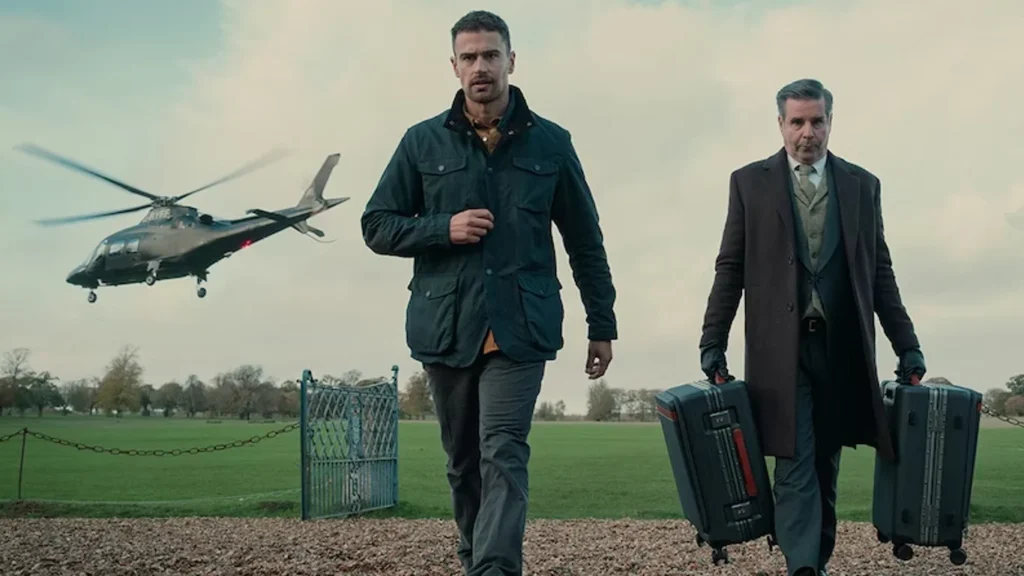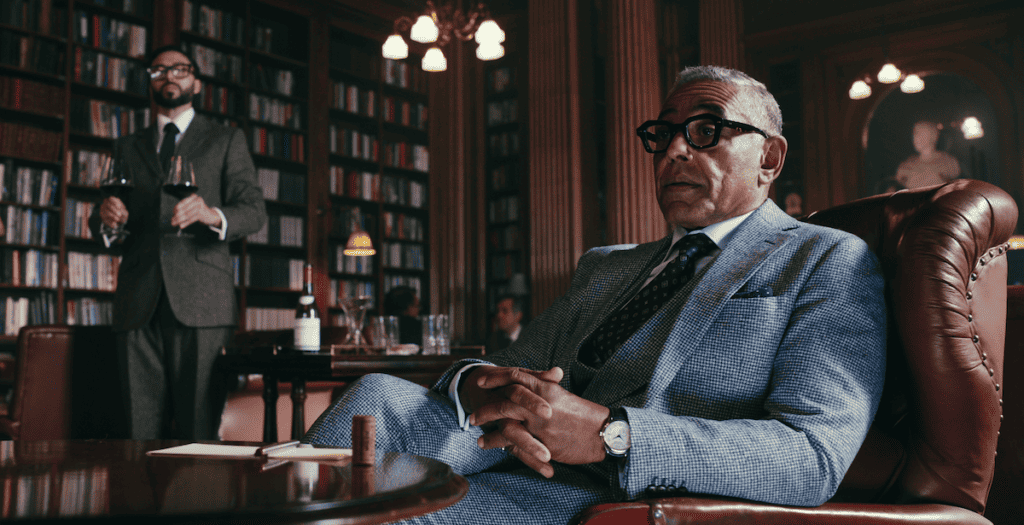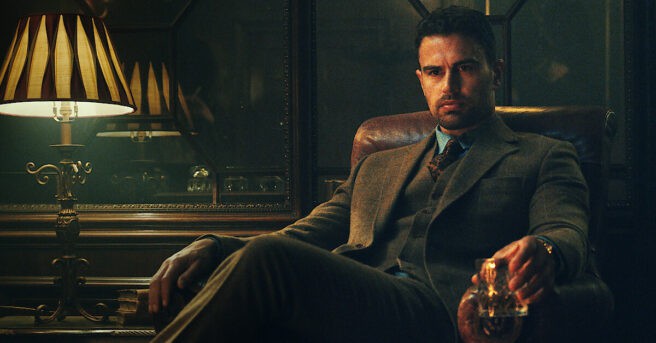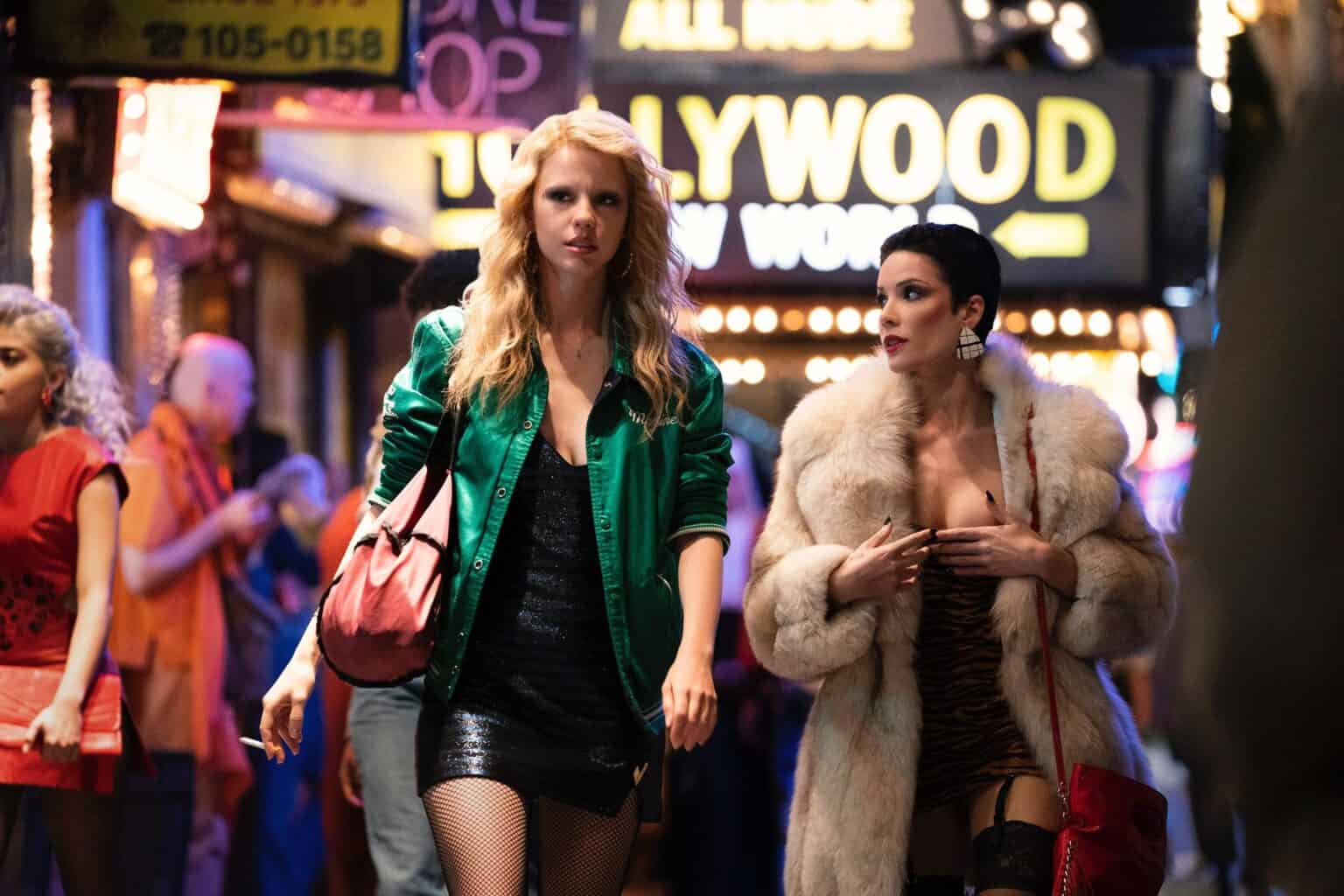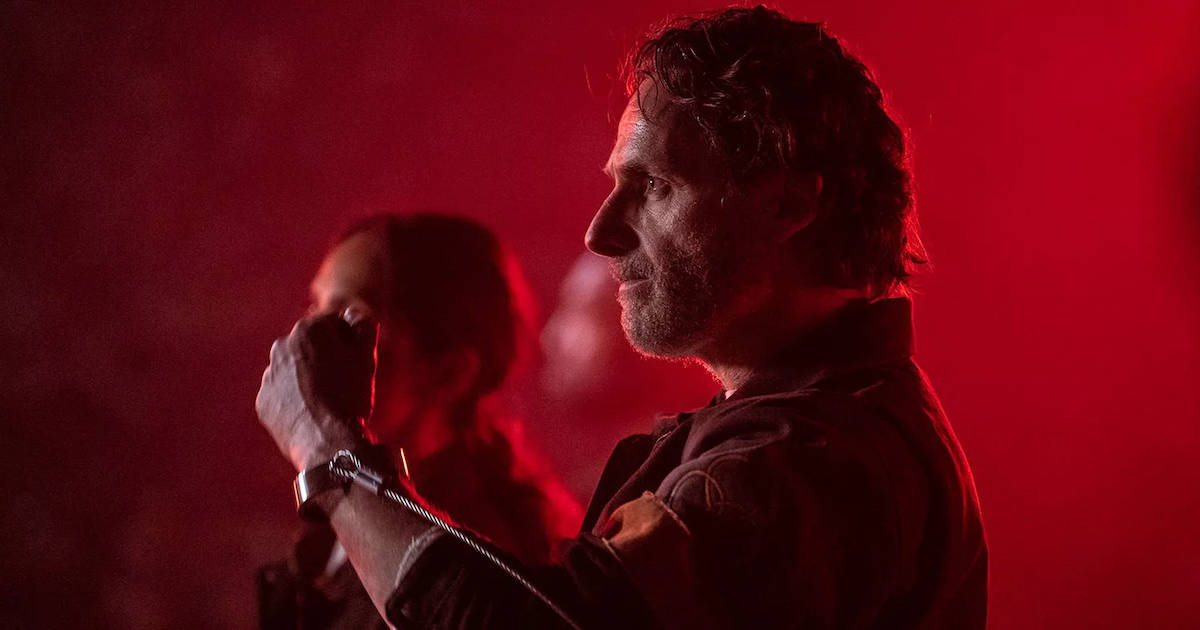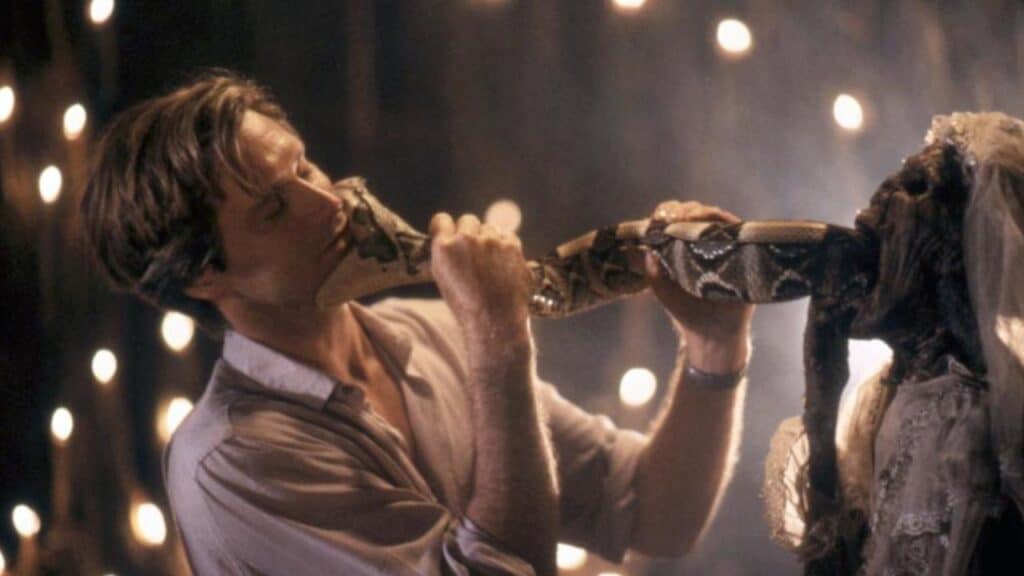
In 1982, anthropologist Wade Davis traveled to Haiti on a mission: to investigate documented cases of zombiism, specifically cases of people who had been declared dead but who then miraculously came back to life. Davis immersed himself in the very real world of Haitian voodoo, witnessing an array of unbelievable rituals and fascinating rites, prompting him to write the book The Serpent and the Rainbow, which would go on to become a bestseller. Referred to in certain circles as a sort of real life Indiana Jones, Davis’ profile rose and, of course, Hollywood came calling, hoping his tales of voodoo and mystery might translate into a spectacular big screen adventure. Davis was wary of Hollywood and worried the adaptation of his book would bastardize his accounts, but hoped if the right people were involved, his story would be given a respectable treatment. As is often the case in the City of Angels, that dream was going to be dashed in a major way. But even Davis couldn’t predict the nightmares awaiting the cast and crew of his story, and maybe you can’t either. Why not pour yourself a glass of pig’s blood after making sure you’ve still got a pulse, because we’re going to find out WTF Happened to The Serpent and the Rainbow (watch it HERE).
Though he was hesitant to see his book turned into a movie, Davis suspected that a serious filmmaker might just do the subject matter justice. Hence, when Davis sold the rights to Universal Pictures, he did so with the understanding acclaimed director Peter Weir, director of Witness and Mosquito Coast would make the film, potentially with Mel Gibson to star. The studio offered the project to both, apparently offering Gibson in particular a very nice sum of money, but they were turned down. Naturally, Gibson’s well known for being a devout Christian, so the idea of working on a movie that promoted the idea of voodooism was unappealing to him. The producers had the inspired idea to bring it to Wes Craven, then smarting from a feud he was having with New Line Cinema over Nightmare on Elm Street profits and stinging after a poor experience making Deadly Friend. The director was looking to shake up his career and take it down a more serious path, even though he naturally realized that horror was now his bread-and-butter and likely always would be. Reading The Serpent and the Rainbow, Craven realized he could have his cake and eat it too with the project, which dealt with inherently spooky subject matter but in a serious manner. It could be the thinking man’s horror film. Craven agreed to make the film after reading the book.
Understandably, this news made the book’s author concerned that his work was going to be turned into just another Hollywood fright-fest. Though he was paid well for the rights, Davis instinctively knew the studio’s worst instincts could take his serious approach to the topic and give it the Freddy Krueger treatment. As he said in an interview before the movie’s release, “When Hollywood saw ‘zombies’ and ‘voodoo,’ they thought Night of the Living Dead.” Add to that the fact Davis hated with a passion a recent Hollywood film set in the world of voodoo, Alan Parker’s Angel Heart, a movie Davis thought made the religion appear inherently linked with evil. The first drafts of the script were problematic, according to the author, with typical horror movie cliches littered throughout, but as the writers and director further immersed themselves into the Haitian culture, the drafts gradually improved. As Davis put it, they became imbued with the surrealistic nature of the culture the more they were exposed to it.
Wes Craven, producer David Ladd, and screenwriter Richard Maxwell all traveled to Haiti and quickly immersed themselves in authentic voodoo rituals, seeing firsthand how the Haitians practiced their religion. It was an effective experience, but for the writer Maxwell, things got a little too real. After asking a voodoo priest to initiate him into voodoo, the priest obliged, and afterward the screenwriter seemed to be completely unmoored from reality. If the stories are true, Maxwell was sent back to the states, where he remained in a paranoid and delusional state for days – supposedly he didn’t even recognize his wife. Rumor has it he was even institutionalized briefly, but thankfully eventually recovered from his dazed condition. How much of his mania was actually due to the voodoo ritual is uncertain.

For Craven, getting the myriad details of the rituals of voodoo just right was crucial, which is why he attended several ceremonies and spoke with legitimate voodoo priests. Craven wanted the people to know he was taking the subject matter very seriously, and the priests responded by giving the production their blessing, as well as “protection” from evil spirits. Like Davis, he wanted to avoid the black-and-white way in which Angel Heart and other movies made voodoo look like a one-dimensional threat, something to be fearful of, without acknowledging the positive and therapeutic effects enjoyed by its practitioners. One ceremony involved Craven being taken to a field in the middle of the night to witness an elaborate ritual, complete with drinking, dancing and music, as well the slaughtering of a live pig. The pig’s blood filled up several buckets, which the Haitians would then drink from, although Craven was mercifully spared from participating in the unappetizing ritual.
That said, perhaps the production would have run smoother had he drank it. Being the first film to shoot in Haiti was not going to be easy. The country’s government was in chaos, with armed resistance and violent fighting happening on a daily basis. Add to that the fact that the villages the production was shooting in were, as expected, very primitive; in fact, there was only one road that led in and out of most of the places they were shooting, and if that road got blocked or congested, they were screwed. Another problem that was likely less supernatural and more scientific was the issue of food poisoning. According to Craven, more than half of the cast and crew got violently ill at one point or another, with people suffering from severe cases of nausea and dizziness for many days. Ironically, Craven was spared any sickness, later saying he felt protected in a spiritual way and feeling determined not to be invaded by what was happening to the rest of the production. That’s food for thought.
But there was indeed some voodoo in the air, as several crew-members reporting having vivid and frightening visions throughout their stay in Haiti. One person evidently saw an animal with eyes like television screens lurking in the jungle, while another claimed to have seen the ghost of a Haitian general riding on horseback. Clearly, the newcomers were being exposed to something beyond their comprehension. As they would sometimes drink hard rum with the locals, one could assume some of their visions were thanks to a different kind of spirit altogether.
Author WadeDavis didn’t actually experience any nightmares himself while working on the book, and the horrifying dreams his film counterpart has were the inventions of Craven, who naturally knew a thing or two about creating terrifying nightmares on screen.
Actor Bill Pullman, who portrays the fictionalized version of Davis in the film, attended several ceremonies and saw for himself the power voodoo had on the people where they were shooting, claiming to witness individuals go through drastic transformations in front of his eyes. Several of these instances were captured on film, including a moment where Pullman’s real-life wife inserts a needle into a man’s face without him blinking an eye. In another scene, a woman chews real glass seemingly without feeling anything. Such sights and more were common in the region, where Pullman remembered the music and celebration going on all day, all night. He and Davis actually became good friends while making the film, and remain so all these years later.
Perhaps the scariest thing that happened during filming was entirely the work of human beings. At several different points in the film, Craven assembles an impressive number of extras to reenact genuine voodoo ceremonies – extras numbering in the low thousands. Well, at a certain point, these extras decided they weren’t being paid enough, and on at least three different occasions held up production while demanding a raise. The final incident proved to be the most intimidating, as the extras decided to strike right during the middle of an important sequence, eventually surrounding the crew and pelting them with rocks and threatening their lives. Craven recollected that the angry Haitians seemed more than prepared to do them in, but the producers were ready to negotiate a pay raise in order to avoid certain doom. But this turmoil, combined with the political strife that was going on just outside their door, convinced the production that they had to move on from Haiti, prompting them to finish the film in the Dominican Republic.

Once shooting wrapped in May 1987, Craven got to work editing The Serpent and the Rainbow. His first cut ran a whopping three hours long, which naturally wouldn’t do, forcing Craven to cut a lot of talking scenes. With a manageable cut in the neighborhood of 90 minutes, the studio began to preview the film for audiences. The results were not good, and apparently after three negative test screenings the studio decided their movie needed more horror and less nuance, of course everything author Wade Davis had feared. With additional funds supplied by Universal, Craven dove into reshoots, the majority of which involved an over-the-top finale that relied heavily on special effects and violence. Apparently, the original ending was an inconclusive downer, and the studio felt the need to send the audience out with a bang.
A voice-over from Pullman was added, presumably to make things clearer for the audience, several actors re-dubbed their dialogue, and a new score from composer Brad Fiedel was commissioned after no less than two scores were recorded and then thrown out, including one from Elm Street composer Charles Bernstein. The producers also re-cut the entire film from top to bottom. Test screenings apparently improved after all the late work, although some of the key players behind the movie weren’t thrilled that their serious look at voodoo had been turned into what they viewed as just another outlandish horror flick that depended on predictable tropes.
One disappointed viewer was Wade Davis who, ironically, disliked horror movies – in an interview he admitted he couldn’t even get through A Nightmare on Elm Street. Seeing the sensationalistic third act was deflating for the author, who wanted to celebrate the voodoo religion without making it seem sinister or ridiculous. Years later, Davis said in no uncertain terms that he hated the film adaptation of his book, but didn’t blame Craven, who he called a wonderful man. Correctly, he put the blame on the studio heads who forced the director to perform the reshoots. Similarly, Bill Pullman seems to be thoroughly bummed out during the audio commentary about the shape the film eventually took, lamenting that Universal was more concerned with making the most commercial version of the movie they could as opposed to staying true to the book.
Screenwriter Adam Rodman, who worked on the script prior to the reshoots, had his name taken off the final credits after seeing the finished movie, so displeased was he with what it had turned into. He used an alias, “A.R. Simoun,” which is a play on an Arabic word for a “wind of poison”, or “hot wind that blows.” The fact that this would have been his first screen credit further underlines how much he resented the movie.
Originally planned for a January 1988 release, The Serpent and the Rainbow came out a month late, on February 5th, thanks to the extra work put into it. The film opened at number two with a respectable $5 million on its way to a domestic total of just under $20 million. With the film’s budget in the $10 million range, it would appear to have been broken even at the box office, but a healthy life on video and subsequently on cable ensured that this Serpent eventually scared up some profits.
But what of its overall legacy? Though the arguments that its third act is silly and ill-fitting with the rest of the film are understandable, there’s no doubt there’s an undeniable authenticity and drama to the events Craven depicts. It’s a never less-than-compelling tale, filled with memorable imagery and imbued with a truly spooky atmosphere that is hard to shake off.
After Serpent and the Rainbow, Craven returned to more familiar territory with Shocker, and though of course he found his greatest success years later with the Scream films, he never made as far-out of a movie as Serpent and the Rainbow again. A shame, because Craven clearly had it in him to make something different, even if, like the majority of his films, it had a true heart of darkness.
A couple of the previous episodes of WTF Happened to This Horror Movie? can be seen below. To see more, head over to our JoBlo Horror Originals YouTube channel – and subscribe while you’re there!
The post The Serpent and the Rainbow (1988) – WTF Happened to This Horror Movie? appeared first on JoBlo.

